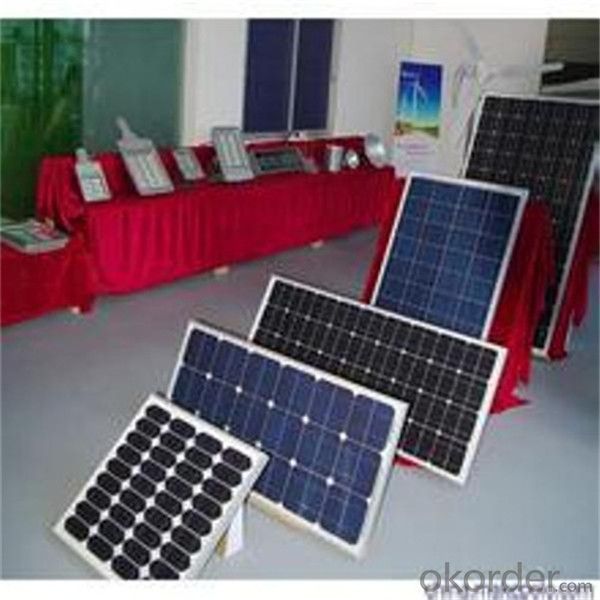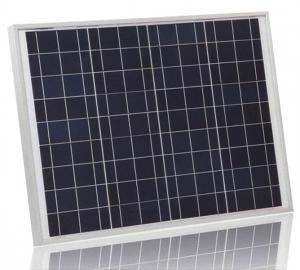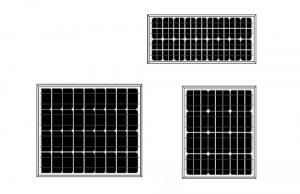Solar Panels Santa Clarita - High Power 175W Mono Solar Module (GP180MA) Supplied in China
- Loading Port:
- Shanghai
- Payment Terms:
- TT OR LC
- Min Order Qty:
- 1000 watt
- Supply Capability:
- 100000 watt/month
OKorder Service Pledge
OKorder Financial Service
You Might Also Like
Specification
Basic Info.
Model NO.: | GP-175P-72 | Material: | Monocrystalline Silicon |
Attribute (E. G.: Size): | Value (E. G.: 12 Inches) | Power: | 175W |
Export Markets: | Global | Trademark: | Gi-Power |
Packing: | Standard Export Packaging | Standard: | TUV; CE; ISO |
Origin: | Guangdong, China | HS Code: | 8541402000 |
Production Capacity: | 70mw/Year |
Product Description
200W/27V solar panel/module for solar power plant.
Quality Ensurance:
1. Excellent A Grade solar cell from Motech or Hanwha solar.
2. Excellent backsheet from SFC, 3M;
3. EVA from Bridgestone / First;
4. Junction box with UL and TUV listed - GZX, IP65;
5. High transmission low iron tempered glass from Xinyi Glass - China Top 1;
6. Solar panels with TUV, CE, ISO9001 certified.
Strong, lightweight aluminum frame design with reinforced sealing and load hold to prevent freezing and warping, and stand against high wind.
Under Standard Test Conditions(STC): Irradiance of 1000W/m2, Am1.5 and 25º C cell temperature
Operating Temperature: -40 ~ +85° C
Storage Temperature: -40 ~ +85° C
Mechanical Characteristics:
Dimensions: 1580mm (L) x808mm (W) x 45mm (H)
Weight: 16kg
Solar Cells: Monocrystalline 125*125 solar cells, 72cells in a 6x12matrix connected in series
Module Warranty:
Warranty on material and workmanship: Five years
Guaranteed output of 90% after 10 years and 80% after 25 years.
| Performance | ||
| Rated Power[Pmax] | 175W | |
| Power Tolerance | ± 3% | |
| Nominal Voltage | 36V | |
| Design Life | 25 years | |
| Electrical Characteristics | ||
| Maximum Power [Pmax] | 175W± 3% | |
| Maximum Power Voltage [Vmp] | 36.43V± 3% | |
| Maximum Power Current [Imp] | 7.65A± 3% | |
| Short-Circuit Current [Isc] | 8.23A± 3% | |
| Open-Circuit Voltage [Voc] | 43.92V± 3% | |
| Current Temperature Coefficient | 0.08%/º C | |
| Voltage Temperature Coefficient | - 0.32%/º C | |
| Power Temperature Coefficient | -0.38%/º C | |
| Maximum System Voltage | 1000V | |
Company Profile


Business Type: Manufacturer
Main Products: Solar Panel , Solar Module , PV Panel , PV Module , Poly Crystalline Solar Panel , Poly Crystalline Solar Module
Number of Employees: 202
Year of Establishment: 2009-03-26
Management System Certification: ISO 9001
OEM/ODM Availability: Yes
- Q: How do solar panels affect the roof's lifespan?
- Solar panels can actually help extend the lifespan of a roof. They act as a protective layer, shielding the roof from harmful elements such as UV rays, rain, and snow. Additionally, solar panels can reduce the temperature of the roof, which can help prevent heat-related damage.
- Q: Can it be used on a cellphone so u never have to worry about low battery?
- Solar panels (arrays of photvoltaic cells) use renewable energy from the sun, and are a clean and environmentally sound means of collecting solar energy. Solar panels are a great way to generate electricity on a small scale. Solar panels are commonly named solar cells or photovoltaic cells. Photovoltaic means literally light electricity.” Solar cells or PV cells rely on the photovoltaic effect to absorb the energy of the sun and cause current to flow between two oppositely charged layers. Solar panel installation is a cost effective part of the green movement for saving energy. There are different types of solar panels available, including Monocrystalline Panels, Polycrystalline Panel, Cast Polycrystalline Panels, String Ribbon Silicone Panels and Thin Film Panels. Find more information about solar panels at this Web site:
- Q: Can solar panels be used in areas with high levels of shade?
- Solar panels can still be used in areas with high levels of shade, but their efficiency may be significantly reduced. The shade from trees, buildings, or other obstructions can block sunlight from reaching the panels, limiting their ability to generate electricity. However, there are advanced technologies and strategies available, such as microinverters or optimizers, that can help mitigate the impact of shade and improve panel performance in shaded conditions.
- Q: I have created a solar setup in my shed i have 2x.5w solar panels i am hoping to charge my 55ah car battery how long would it take to charge the battery and how many watts could i used a day
- I don't think so, but if it did, it would take a very long time. You need enough wattage or amps to push the power in the battery and 3w may not be enough. You would be better off with a small 2v battery, maybe the type they use for emergency lights. I would use a sealed battery for this type of setup because car batteries are designed for heavy charging with alternators from 60 amps and up.
- Q: How can I know the right type of solar panel to choose for my small village house in Africa?
- The power output of a solar panel uses a formula to determine kilowatts produced per hour per square meter per day. This calculation is important because, if you plan to install a solar power system for your home, you will want to know how many solar panels will be needed. To calculate solar power requirements correctly, you need to gather the data that is needed for the calculation. First you have to find the average amount of solar radiation available for your area. You can use a solar radiation chart. This can range from a 4 to a 7 depending on the area you live in. Write the number down on a piece of paper and indicate it with the letters RA. Next is determine the amount of electricity that you use daily. Add the kilowatt-hours used per month from your utility bill. Multiply this number by ,000 to get the watt hours in a month. Divide the total by 30 for the amount of electricity you use daily. Write this number down and indicate it with the letters DE. Determine the percentage of your home that you want to power with the solar power system. Write this number down and indicate it with the letter P. Determine the system inefficiency factor for the solar power system. You should be able to find this on the brochure for the system or from the manufacturer's web site. Write this number down and indicate it by the letter I. Determine the power or yield that is required for your home. Use the equation P = I x (DE x P) / RA to find the power requirements in kWh. Divide the number from Step 5 by the peak wattage for a single solar panel to determine the number of panels you will need for your home. Goodluck! :)
- Q: Can solar panels be damaged by hail or other elements?
- Yes, solar panels can be damaged by hail or other elements. Hailstones can cause cracks or dents on the surface of the panels, reducing their efficiency. Additionally, other elements like strong winds, debris, or extreme weather conditions can also potentially damage solar panels. However, modern solar panels are designed to withstand various weather conditions and are often tested for durability.
- Q: Could you throw some long scientific words in with your answer so I can impress my teacher, I'm looking to expand my scientific vocab. Thanks
- Solar panels are a generic term for any type of solar collecting panel. There are two major types: Photovoltaic uses substances that turn the incoming radiation directly into electricity. Usually you have to have direct sunlight (no clouds) for this to work well. Solar thermal is also used in a lot of areas. Here the radiation is used to heat a circulating fluid (often water directly), and then that is either used directly, or it's used for heat exchange with a heat pump or a boiler system. Solar thermal can collect significant heat even on a cloudy day. So a solar panel could be made of photovoltaic panels, but it doesn't have to be.
- Q: i am doing this group project fro school. I would like to know if anybody knows anything about how to read a Spec. Sheet on Solar panels and where I could go to start researching them. Anything would be great!
- Rate ,power , voltage and effencicney are four important iterms to choose one battery.
- Q: Can solar panels be used to power a space station?
- Yes, solar panels can be used to power a space station. In fact, many space stations, including the International Space Station (ISS), utilize solar panels as their primary source of electrical power. These panels convert sunlight into electricity, providing a sustainable and renewable energy source for the space station's various systems and experiments.
- Q: okay so my teacher is trying to install a solar panel but we have a problem we don't know where to ground it because it will be a movil house. guys do you have any ideas?
- Build okorder
Send your message to us
Solar Panels Santa Clarita - High Power 175W Mono Solar Module (GP180MA) Supplied in China
- Loading Port:
- Shanghai
- Payment Terms:
- TT OR LC
- Min Order Qty:
- 1000 watt
- Supply Capability:
- 100000 watt/month
OKorder Service Pledge
OKorder Financial Service
Similar products
Hot products
Hot Searches
Related keywords




























